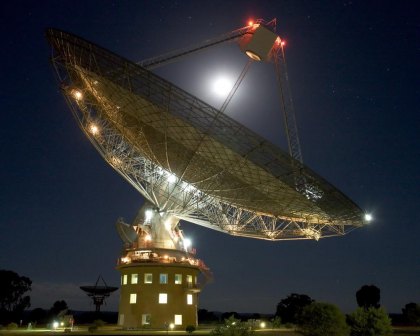Today's Post:
High-powered telescope to search for life

The telescope will be used to search for other civilizations.
A powerful Australian radio telescope will be used in Breakthrough Listen, the 10-year, $100 million astronomical search for intelligent life beyond Earth. The project was launched in 2015 by internet entrepreneur Yuri Milner and Stephen Hawking, the world's foremost theoretical physicist.
The Parkes radio telescope will help in surveys investigating whether civilizations exist elsewhere with technologies similar to our own, explains the website for Australia’s Commonwealth Scientific and Industrial Research Organization [CSIRO]. Radio astronomy is “the study of celestial objects that give off radio waves,” according to the U.S. National Radio Astronomy Laboratory.
The telescope is targeting exo-earths, planets similar to Earth orbiting in the habitable zone around a star. It is starting with the closest example, Proxima b, orbiting a red dwarf star, Proxima Centauri, 4.3 light-years from Earth.
The Breakthrough Listen project will use 25 percent of the science time available on the telescope during the next five years, the news release said.
The Parkes telescope is the “largest single dish radio telescope in the Southern Hemisphere,” said Douglas Bock, director of CSIRO astronomy and space science, in a recorded statement on the center's website. “And, being in the Southern Hemisphere it’s uniquely capable of seeing the center of our galaxy, and other galaxies that you can’t see from the Northern Hemisphere.”
Two other telescopes, the Green Bank Telescope in West Virginia and the Automated Planet Finder at Lick Observatory in California, are already part of the search.
Related:
Planet orbiting nearby star could have ocean
Jumbo Earth-like planet orbits star
Planet in habitable zone orbits sunlike star
Scientists: Water possible on three planets
If you would like to comment, give us a shout, or like us on Facebook and tell us what you think.

